How to Create a Home Filing System that Works for You
This post may contain affiliate links which means I make a commission if you shop through my links.
Disclosure Policy
If you struggle with paperwork organization then you are probably looking for ideas on how to create a home filing system that you are going to stick to.
There is not a single, magic, system that will work for everyone – but this post will give you some ideas that you can try.
And be sure to subscribe to our newsletter for more organizing and productivity tips.
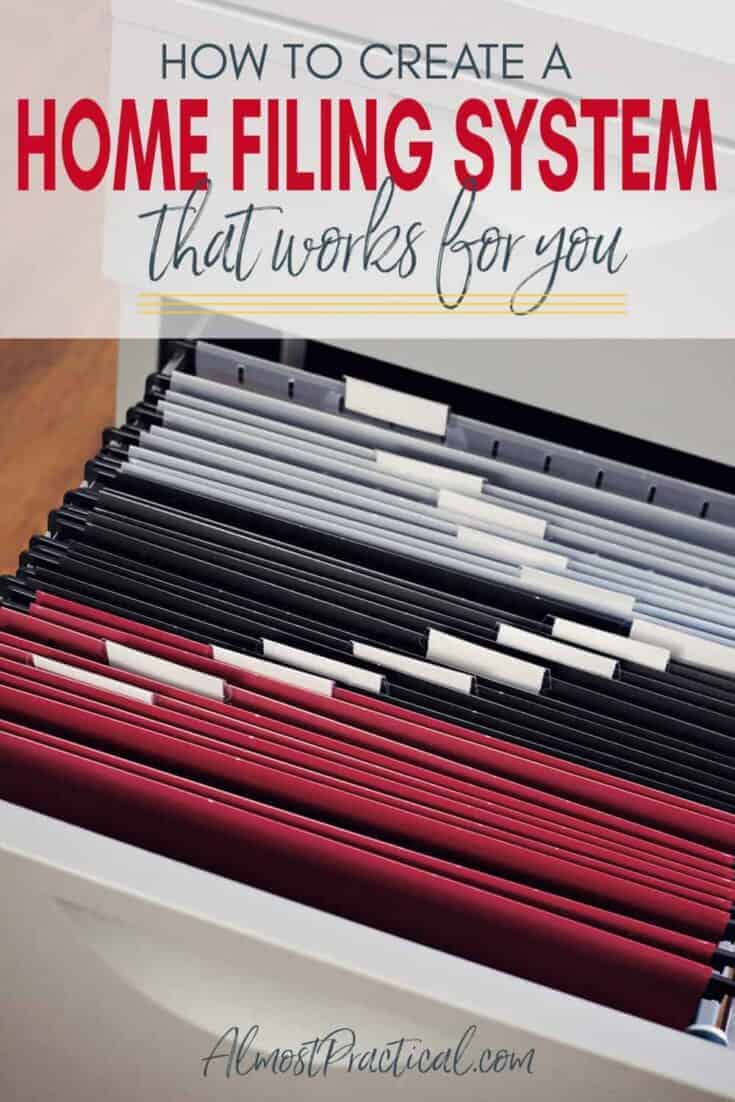
The 5 Basic Filing Systems
Let’s start by reviewing the 5 different ways that most people organize their files.
- Alphabetical
- Chronological
- Organized by Topic or Category
- Geographical or
- Numerical
Alphabetical
The alphabetical method is self explanatory.
You can set up your files in your file cabinet alphabetically – from A to Z.
Chronological
Chronological means date based.
So you could set up your files by month and year.
Topic or Category
Using a top or category based system, you would set up your files by the type of content that you include inside.
So, you might have files set up for bills, kids, home, work, etc.
Geographical
Using this method you would organize your files by the location of what the content pertains to.
Numerical
This is a numbered system that is not very descriptive. The numbers you use could refer to priority or sequence.
Which Filing System is the Most Common?
For home filing systems in particular – the ALPHABETICAL system is the most popular.
However, a purely alphabetical system would actually be a little hard to follow.
You would end up with unrelated files all grouped together by name.
For example, imagine this scenario:
- your bank is ABC Bank,
- your child’s name is Abigail,
- you use Acme Lawn Service, and
- your other child’s name is Randolph.
Your file cabinet would have files for ABC Bank, Abigail’s School Papers, Acme Lawn Service all in a row.
But Randolph’s School Papers would be in a completely different file cabinet drawer or further back at the very least.
How to Organize Your Home Filing System
To keep this from happening, most people use a combination of two or three of the basic filing systems that I named above.
Most household paperwork falls into a group of common categories.
You have things like
- your bills,
- important papers,
- bank statements,
- insurance policies,
- medical records,
- papers related to your kids or other family members, etc.
See this list of 70 File Cabinet Organization Categories for even more ideas.
Category Based Filing System + Alphabetical Filing System
A great way to organize your home filing system is by category – and then organize the files inside that category alphabetically.
So, you are combining a category based filing system with an alphabetical filing system.
This combination will work for most of your files.
But you may want to do something a little different for your current bills.
When to Use a Chronological or Numerical System
Staying on top of your current bills is important – you don’t want to miss a due date or you might get hit with some hefty late fees.
One way to help yourself remember to pay bills on time is to use either a chronological or numerical based home filing system.
For example, you could set up folders for each month of the year, and put the bills and other paperwork that requires action into a monthly folder.
This would be a folder that you check on a regular basis throughout the month to stay on top of the action items inside.
Alternatively, you could set up numerical folders for each day of the month (as outlined in David Allen’s Getting Things Done book) and place your to do items for each day in the corresponding folder.
Just make sure you don’t forget to check the folders on a daily basis!
How to Set Up a Simple Home Filing System
To get started with your home filing system you will need to answer a few questions and gather a few supplies.
Where will you store your files?
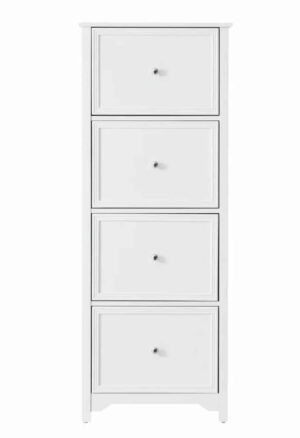
My preferred method is using a filing cabinet. Here are some ideas for choosing the best file cabinet for your home office.
If you want something with a more pleasing aesthetic – check out these fun and fancy file cabinets that may blend with your decor.
If you don’t have space for a file cabinet and you don’t have a ton of files, there are other options that will work just as well.
Although it may not blend with your home decor – this rolling file cart is great if you don’t have a dedicated home office. Just roll it from room to room with you to have your files with you at all times.
This Elfa white mesh file cart is a prettier and has generous storage drawers for other office supplies.
There is also a wide variety of file boxes that you can use to store hanging files.
You can use fabric covered boxes to store your files in plain sight or plastic bins for better protection.
Use a Combination of Hanging Files and Folders
To store your papers in your file cabinet, use a combination of hanging files and folders.
I use hanging files for each category and place a few folders inside each hanging file for some subcategories.
If you have a lot of subcategories – you can use a hanging file with a wide base to accommodate those.
For example, you may have a hanging file for Bank Statements and inside have a folder for each bank where you have an account.
You can find hanging files in office green and cheap manilla folders at Staples.
But if you are looking for something nicer to look at – Container Store has a beautiful selection of colors.
The beautiful folders in the image above can be found here. And you can find an even bigger selection of cute file folders here.
Label Everything
The easiest way to sabotage your home filing system is to skip the labeling.
Don’t fall into this trap!
Take the time to label your hanging files, folders, and your file cabinet drawers.
This way you will know exactly where to file each piece of paper that crosses your desk.
You could certainly handwrite your labels but I like to use a Brother label maker for this.
Schedule Time To Do Your Filing
The final step in your home filing system is to actually make time in your schedule to do your filing.
This could be once a day, once a week, or you could stretch it to twice a month.
Anything longer than that my is probably too long.
You want to keep your workspace free of paper clutter – that is your goal.
So be sure to USE the system that you worked so hard to create!
Benefits of a Home Filing System
Creating a system for filing your paperwork will bring you peace of mind.
You will know where to look for the important documents that you need and know exactly where to store them when they cross your desk.
Be sure to subscribe to the Almost Practical Organizing Newsletter for more ideas on how to organize your home and improve your productivity.


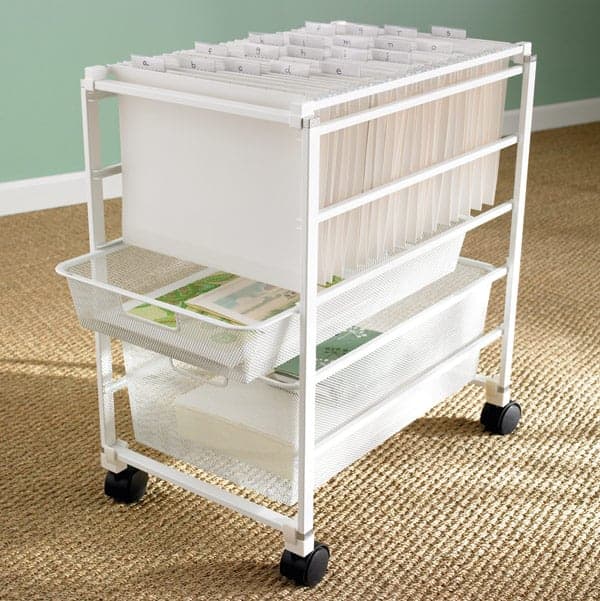



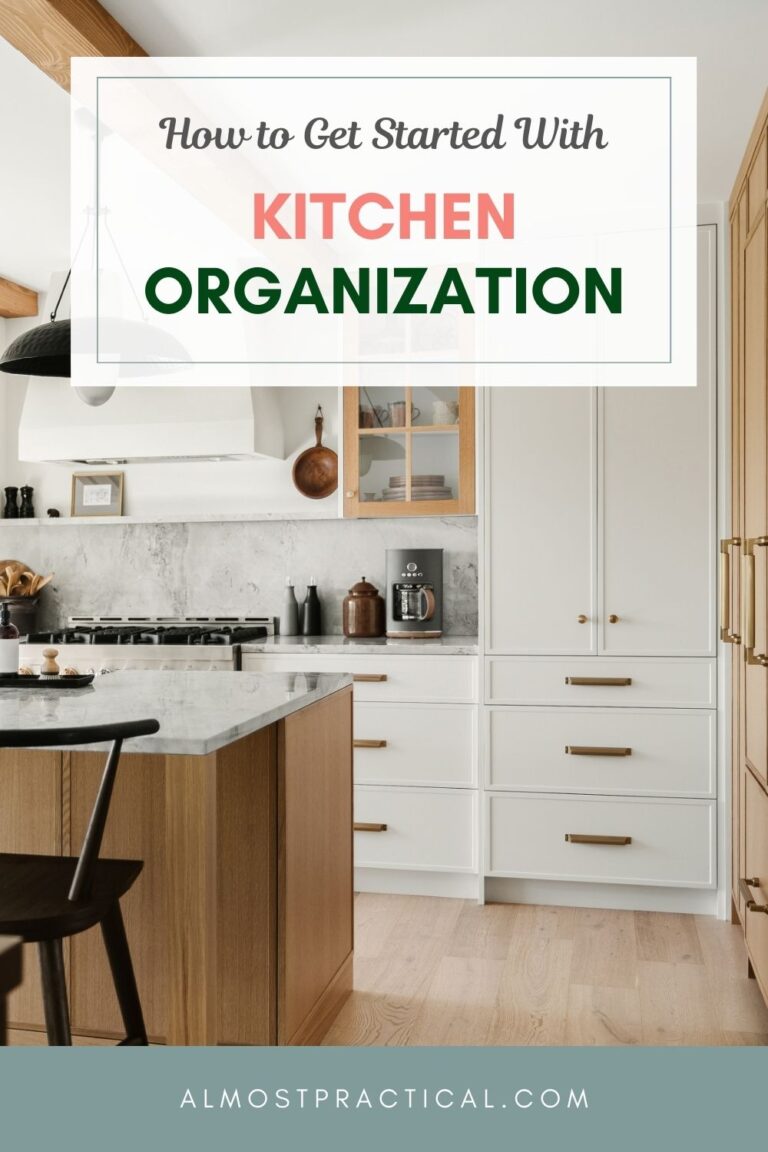
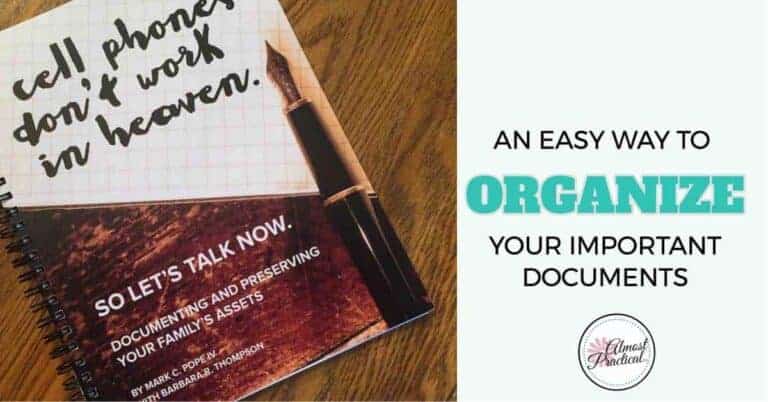
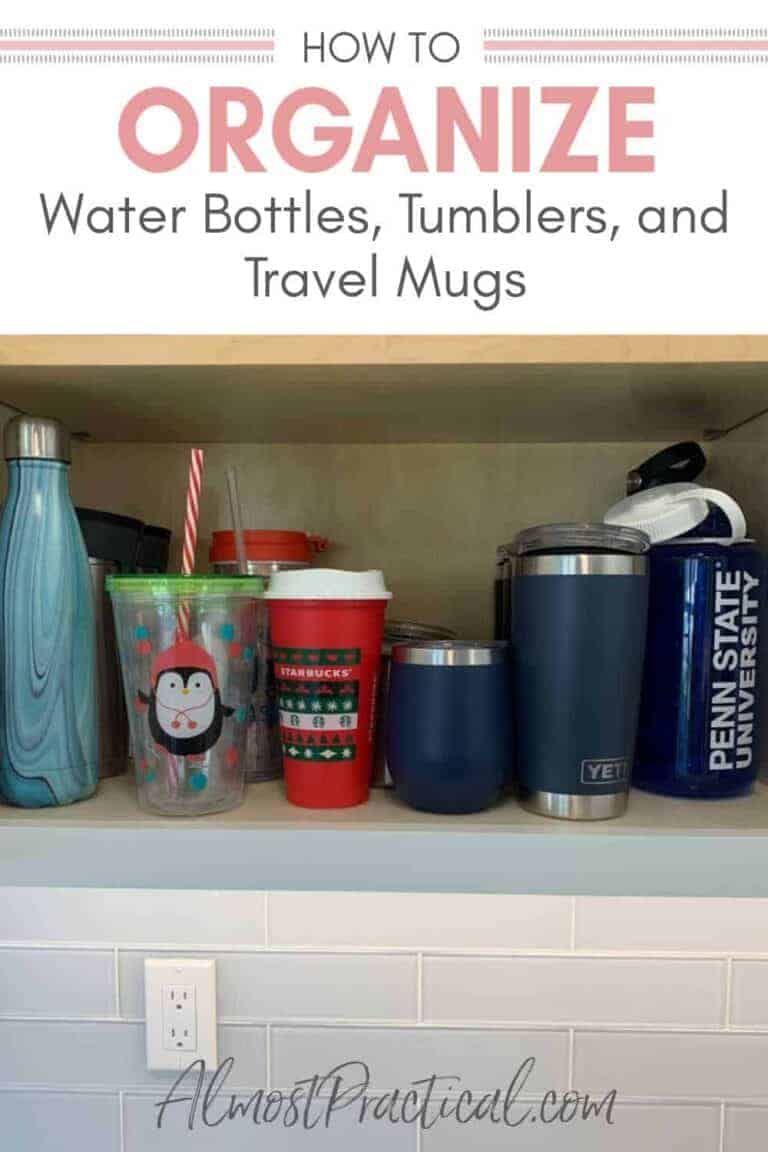
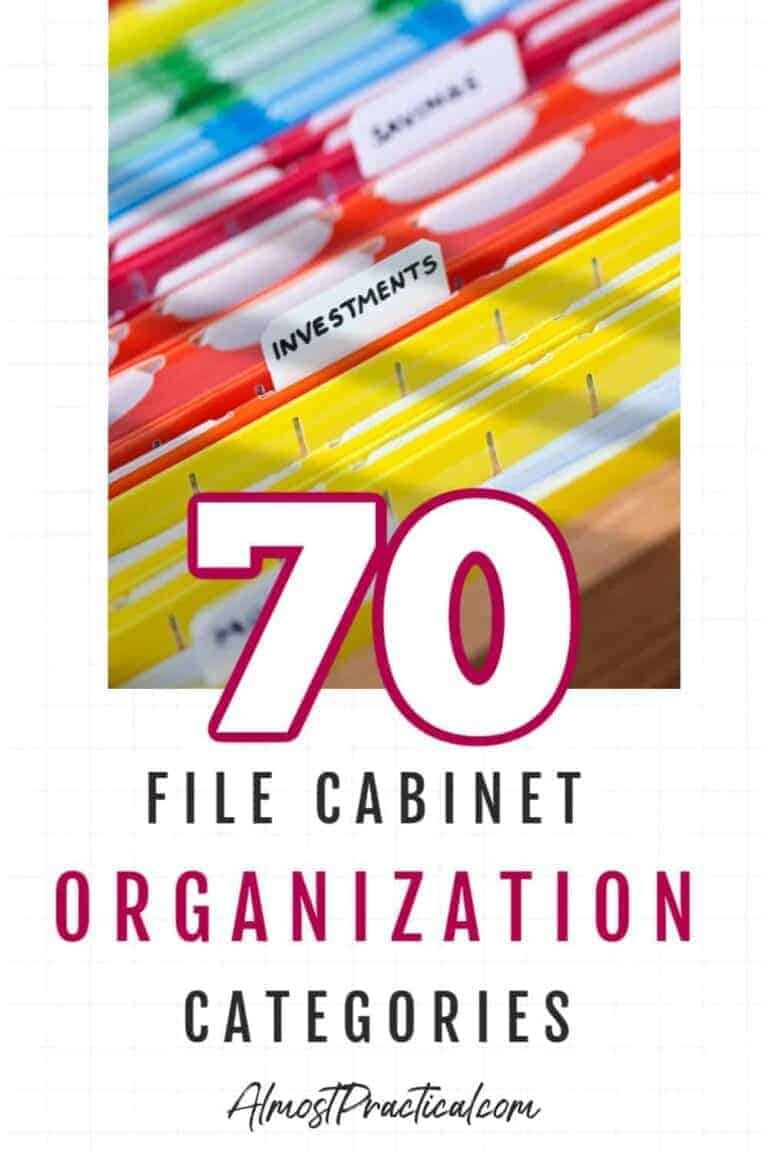
Lots of great ideas here. Organizing by color and using labels are useful tips! Getting control of the filing means the home office stays neater and it’s easier to get your work done.